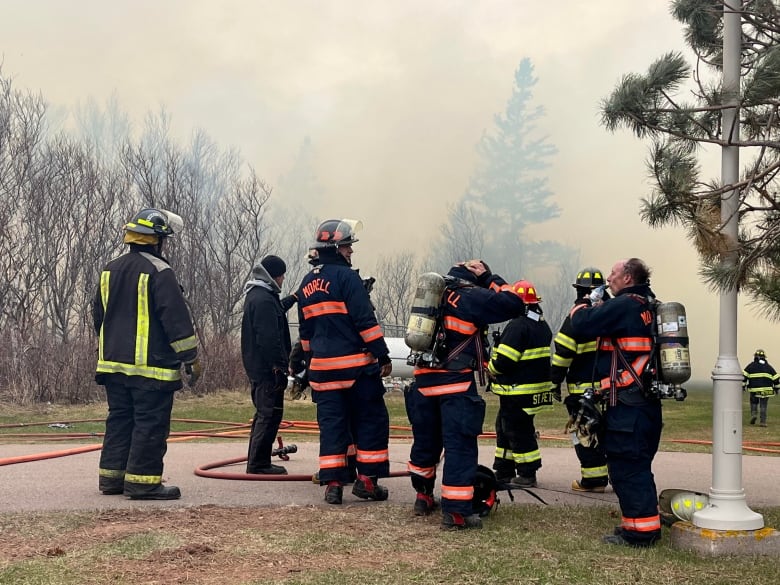About 70 provincial civil servants have signed up to become wildfire fighters as part of the provincial government’s plan to better prepare Prince Edward Island for future fire seasons.
If all of them complete the training, the Island’s contingent of provincial wildfire fighters will more than quadruple.
“It’s so exciting that we have such a great response,” said Steven Myers, the province’s minister of environment, energy and climate change. “It’s just going to take us a little bit longer to get each and every one of them certified.”
The province had been planning to train everyone this fall, but a second cohort will now be trained in 2024, said Myers.
Wildfires are not common on Prince Edward Island, but a forest fire did burn three hectares of land at the Links at Crowbush Cove in May. Three years earlier, one broke out near Murray River in southeastern P.E.I.
As fires swept through parts of Nova Scotia this spring, the P.E.I. government invited any interested staff to apply for the training program. At the time it said the plan was to “build capacity for local community protection and support,” but Myers said it also makes it easier to quickly respond to fires not just at home, but elsewhere in Canada.
You need to have helicopter training — to jump out of a helicopter.— Steven Myers, minister of environment, energy and climate action
“When we train civil servants to do the job, we don’t have to go through all the figuring out: how are they going to get paid, they can’t leave their jobs, can they get the time off. When they work for us, the process will be much more seamless.”
The Ministry of Environment, Energy and Climate Action said training preference would be given to willing staff who are members of volunteer fire departments, Indigenous, or members of a racialized group.
A spokesperson said volunteer firefighters already know how wildfires spread, and diverse applicants were targeted “to help increase the diversity in the wildland firefighter community within Canada.”
Training regime demanding
Not everyone who applied for the opportunity will end up being trained, the minister said. The job requires candidates to be physically fit.
“One of the components we need to do is helicopter training. [If] you go to fight fires in most jurisdictions, you need to have helicopter training — to jump out of a helicopter on site, while it’s running,” said Myers. “You have to be able to do all the things required.”

Accepted applicants will get 10 days of training from government staff with help from the Emergency Measures Organization. The trainees will be mentored by experienced wildfire fighters when and if they are faced with real-life scenarios.
“As each individual demonstrates their ability to operate in more complex situations, they will be give greater levels of responsibilities and training,” the provincial spokesperson said in an emailed statement.
The Ontario government contracts private companies to train its forest firefighters. It is a five-day course, said Dave Cowan, a trainer with Fire1, a group that does wildland firefighter training out of North Bay.
“It’s considered basic training, just to prepare them, and then the training goes on and on for the rest of their career,” said Cowan. “We might give them five to 10 per cent of their training that they’re going to have, then it goes on and on from there.”
Holland College offers pro training
Professional firefighters certified though Holland College’s program at the P.E.I Firefighter Training Centre go through a 22-week program. It teaches them how to handle house fires, vehicle fires and using tools like the Jaws of Life. It also includes eight weeks of on-the-job training.
Cowan says professional firefighting is mostly handling structural fires, and is a “very, very different” job from wildfire fighting.
Structural firefighting, they deal with chemicals and all kinds of other hazards. We don’t use that kind of stuff. We’re dealing with outside, in the forest.— Dave Cowan
“Structural firefighting, they deal with chemicals and all kinds of other hazards,” he said, including the danger of structures falling down, and situations that call for a self-contained breathing apparatus.
“We don’t use that kind of stuff. We’re dealing with outside, in the forest.”
The P.E.I. civilian training is part of a $550,000 fire prevention program, announced in the 2023 budget. It also includes new equipment for volunteer fire departments and drones to better track fire spread and hot spots.


